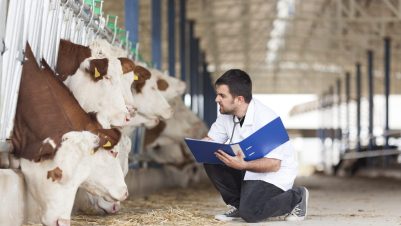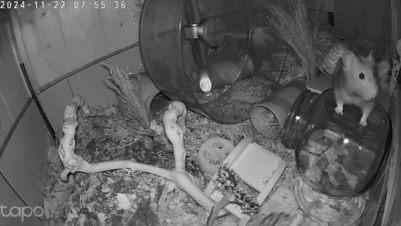Ian Ohnstad (The Dairy Group) welcomed over 90 delegates to the British Mastitis Conference. All sponsors were warmly thanked by the chairman and it was noted that without their contributions the conference would be unable to function in its present format. Plans are already being laid for the 30th event this year.
Challenges with robotic milking systems
A detailed study of automatic milking systems, applied with robotic milking, was described by Torben Werner Bennedsgaard (Denmark), which included research carried out at the University of Aarhus.
The way that the different robots operate has indicated that the Lely design results in a higher incidence of Streptococcus agalactiae, whereas DeLaval-milked herds show greater problems with Staphylococci. These problems can be overcome by the farmer.
Utilising video, the speaker demonstrated the parts of the automation that touch the udder and teats during the milking process. These include mechanical arms, brushes and the sides of the washing cups that are not cleaned automatically and can grow bacteria if the manual cleaning is not rigorously carried out. High-pressure spraying with water is not effective in removing biofilm; alkaline soap applied as foam and manually removed with water and brushing is advised as a daily routine. If the automatic cleaning solutions are allowed to run out, or not correctly applied, bacteria levels increase and a rise in somatic cell count, total bacterial count and clinical mastitis follows.
Few robotic milking systems are understood to be working as intended. Different teat spray products have different viscosities and it is necessary to adjust spray nozzles for pressure, spray duration and volume. Poor teat coverage is a common finding. The operation of the automated systems means there can be a carryover of milk from one cow to another, which gives false cell count readings. This is a problem for investigators looking into mastitis-related incidences. Tests to check the concentration of the disinfectants used during the automatic process can prove worthwhile, to educate farmers and indicate the source of disease spread. Where high and low cell count cows are milked through the same robot, the need for attention to detail is more acute.
Dairy business
Ian Powell (The Dairy Group) presented an interesting review of the difficulties with the business aspects of milk, the needs of the milk buyer and the needs of a sustainable dairy farm business. Over the past three years, the cost of dairy production has decreased, but so has profitability with the dairy farmer exposed to price volatility. The speaker concludes that “whilst Brexit will present new challenges, they are unlikely to be anything worse than has been experienced by dairy farmers in the past two years”.
There are approximately 200 milk buyers (processors and brokers) and some 10,000 milk sellers (dairy farmers). Around 14 billion litres of whole milk are produced in the UK with 50% going into liquid milk, 25% cheese, 15% yoghurt, fresh desserts, etc., and 10% ‘commodity’ butter and milk powder. The liquid buyer mainly pays for volume, with some payment for fat and usually little or no payment for protein, whereas the milk buyer for cheese pays a high price for fat and protein with little or nil for volume.
Examples from October 2017 for a standard litre of milk show a variation in basic milk price from 23.63 to 30p with a total price received of 29.62 to 31.59p.
Penalties and bonuses include the milk hygienic quality, volume, transport, spring or autumn production, level and accuracy of supply.
Farmers producing milk for supermarkets received 5.8ppl above the UK average over the past two years. Such milk contracts are highly valued in a market downturn. Looking ahead, the milk price moving forward is a greater business risk for the farmer than for the milk buyer. The buyer can adjust the price paid to maintain an operating profit. The recent introduction of a forward fixed price by some buyers offers the farmer some certainty.
The UK is a major importer of dairy produce and a weaker pound and import tariffs would be beneficial to the milk price. Ian Powell summarises that “dairy farmers have little option other than to improve efficiency and to reduce the cost of production”.
Advances in milking machine liners
Ongoing work on milking machine liner development was presented by John Upton (Teagasc Moorepark), reviewing the effect of pulsation rest phase duration on teat end
The milk price moving forward is a greater business risk for the farmer than for the milk buyer. The buyer can adjust the price paid to maintain an operating profit
congestion. A combined study with Aarhus University and Wisconsin-Madison quantified the effect of the rest phase duration of pulsation on the teat canal cross-sectional area during the period of peak milk flow. An understanding of the influence of milking machine settings on the flow rate of milk is seen as important for the development of best practice and for appropriate sizing of milking facilities.
The more accurately milk flow can be measured, the more closely the effect of vacuum level, pulsation settings, liner compression and other conditions on the physiology of the udder and teat during milking can be measured. A quarter milking analyses device (Mi4) was used to implement experimental treatments involving 18 cows. The details are contained within the proceedings and it was concluded that the current ISO standard for a minimum rest phase was supported. The larger the teat canal area, the less the teat end congestion and measurements of teat sizes in a herd is an aid to choosing appropriate milking machine liners.
The AHDB Dairy mastitis control plan
The impact of the AHDB Dairy mastitis control plan on a 600-cow herd with a high incidence of clinical mastitis, three-times-a-day milking, no treatment protocols and many individuals milking the cows, was presented by James Breen (Orchard Veterinary Group) and Nigel Jones (Oswestry). During 2013, the clinical mastitis incidence was 60-70 cases per 100 cows with a high rate of clinical recurrence. Investigations indicated predominantly Gram-positive infections of Streptococcus uberis and Staphylococcus aureus (penicillin-resistant) with an indication of dry period infections leading to clinical cases in the first 30 days of lactation.
A review involved all the farm staff and led to a series of improvements including dry cow environment hygiene and aseptic procedures. The incidence of mastitis fell to 20 cases per 100 cows with over 1,500 fewer antibiotic administrations recorded. The speakers emphasised the need to target specific herd deficiencies with the mastitis control plan.
The best poster award was collected by James Breen on behalf of a research team that has developed an electronic automated herd mastitis pattern analysis tool (PAT) which will assist mastitis control plan deliverers to make an initial herd diagnosis. Thirty input parameters are collected for each of six three-month periods. Eight other posters were presented. These are published in the proceedings and the projects outlined may be further developed.











